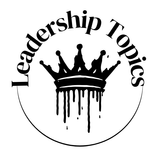Cost-Saving Strategies for CFOs Amid Economic Uncertainty

As economic volatility continues to challenge businesses worldwide, CFOs are under immense pressure to safeguard their organizations' financial health while driving efficiency and growth. Cost-saving has become a top priority, but achieving sustainable savings without compromising long-term goals requires a careful and strategic approach.
In times of uncertainty, cutting costs haphazardly can lead to long-term damage, from eroding employee morale to weakening the company’s competitive edge. For CFOs, the challenge is clear: How can they reduce costs responsibly, ensuring their businesses remain agile and resilient while maintaining the resources needed to thrive once conditions improve?
Strategic Cost Management, Not Just Cutting
In times of economic stress, slashing budgets and reducing headcount might seem like the easiest solutions. However, such measures can backfire if done without a strategic framework. The role of the CFO is to approach cost-cutting in a way that balances short-term needs with long-term sustainability.
Rather than focusing solely on immediate cuts, CFOs should evaluate where strategic investments can drive cost savings over time. For example, investing in automation technology or digital tools can streamline operations and reduce operational costs in the long run. Similarly, shifting focus to variable costs—expenses that fluctuate based on business activity—rather than fixed costs provides more flexibility without sacrificing core capabilities.
Analyzing Cost Structures with Precision
Before making any decisions, CFOs must gain a comprehensive understanding of their company’s cost structure. Conducting a granular analysis of costs—both direct and indirect—helps identify inefficiencies and areas where savings can be realized without jeopardizing essential operations.
A zero-based budgeting approach, where each expense must be justified from scratch rather than based on previous budgets, can be an effective tool in this process. By questioning every line item and re-allocating resources based on current priorities, CFOs can uncover hidden savings and redirect funds to areas that offer greater value.
Optimizing Supply Chains
Supply chains represent a significant cost for many businesses, especially in industries such as manufacturing, retail, and technology. During times of economic uncertainty, disruptions to supply chains—whether from geopolitical tensions, pandemics, or trade restrictions—can create additional financial strain. CFOs must look at supply chain management not only as a cost center but as an opportunity for savings.
One approach is to diversify suppliers to avoid over-reliance on a single source, particularly if that source is vulnerable to market fluctuations or disruptions. Additionally, renegotiating contracts with suppliers or exploring new partnerships can yield better terms and lower prices, especially when demand softens.
Leveraging data and predictive analytics to optimize inventory management can also reduce costs associated with overstocking or understocking, improving overall efficiency.
Embracing Automation and Technology
One of the most effective ways CFOs can achieve long-term cost savings is through the implementation of technology. Automation and digital tools can streamline repetitive tasks, reduce errors, and enhance productivity, all of which contribute to reduced operational costs.
In finance, for example, automating processes such as invoice processing, expense reporting, and payroll can free up staff time for more strategic work. Moreover, deploying data analytics and business intelligence tools can help CFOs identify spending trends, forecast future costs, and make data-driven decisions that further drive savings.
Cloud computing is another area where companies can reduce overhead costs. Shifting to cloud-based systems for data storage, collaboration, and even customer relationship management reduces the need for expensive physical infrastructure, lowering IT costs while increasing scalability.
Workforce Efficiency without Layoffs
While labor costs often represent a significant portion of a company’s expenses, layoffs should be considered a last resort. Losing valuable employees can hurt productivity and lead to higher costs in the long run, especially when the economy recovers and the need to rehire becomes urgent. Instead, CFOs should explore alternative strategies to manage labor costs while retaining talent.
Options such as temporary salary freezes, reducing overtime, or offering voluntary unpaid leave can help alleviate short-term financial pressures without the negative consequences of large-scale layoffs. Additionally, companies can consider retraining or upskilling current employees to fill critical roles, reducing the need for expensive external hires.
Flexible work arrangements, such as remote work or hybrid models, can also reduce costs related to office space, utilities, and employee transportation. For companies that have successfully transitioned to remote work, scaling back on office space or switching to coworking arrangements can yield significant savings.
Enhancing Cash Flow Management
In uncertain economic environments, cash flow becomes even more critical to a company’s survival. CFOs need to prioritize cash flow management by optimizing the company’s working capital. This involves ensuring that the company is collecting receivables as quickly as possible while negotiating longer payment terms with suppliers to maintain liquidity.
Revisiting payment terms with customers, particularly those in industries hit hardest by economic downturns, can help mitigate the risk of late payments or bad debts. CFOs can also explore alternative financing options, such as factoring or supply chain financing, to bridge short-term cash gaps without taking on additional debt.
Reassessing Capital Expenditures
Capital expenditures (CapEx) often represent a significant portion of a company’s budget. During periods of economic uncertainty, CFOs must critically reassess planned capital projects and prioritize those that are most likely to yield immediate or short-term returns.
This doesn’t mean halting all investments. In fact, delaying critical upgrades or expansions could leave a company lagging behind its competitors once the economy stabilizes. Instead, CFOs should evaluate each CapEx project based on its potential to drive operational efficiency, customer satisfaction, or revenue growth in both the short and long term. Projects that offer immediate cost savings or are essential to maintaining core operations should be prioritized, while more discretionary investments can be delayed until the economic outlook improves.
Outsourcing and Strategic Partnerships
Another strategy for reducing costs without sacrificing quality is to outsource non-core functions. Many companies find that outsourcing IT services, human resources, or customer support can lower operating costs while maintaining or even improving service quality. By working with external providers, companies can benefit from specialized expertise and economies of scale.
CFOs should assess which internal functions are critical to their business operations and which could be outsourced more cost-effectively. Additionally, strategic partnerships with other organizations, including joint ventures or shared service agreements, can reduce costs while opening new opportunities for growth.
Balancing Short-Term Savings with Long-Term Goals
Ultimately, the goal of any cost-saving initiative is to balance the need for short-term financial stability with long-term growth and competitiveness. CFOs must ensure that cost-cutting measures do not erode the company’s ability to innovate or expand once the economy rebounds. This requires a forward-thinking approach, where savings are achieved through efficiency and optimization, rather than simply slashing budgets.
In this context, CFOs should consider the impact of cost-saving measures on the company’s broader strategy. For example, cutting research and development (R&D) spending might provide short-term relief but could stifle innovation and limit the company’s ability to bring new products or services to market.
Navigating Uncertainty with Precision
Economic uncertainty may be inevitable, but CFOs are uniquely positioned to guide their organizations through turbulent times by implementing strategic cost-saving measures that preserve both financial stability and future growth potential. By focusing on areas like automation, supply chain efficiency, cash flow management, and careful workforce planning, CFOs can steer their companies toward a leaner, more resilient future.
While there are no one-size-fits-all solutions, the CFO’s role is to continuously assess and adapt cost-saving strategies to align with both current realities and long-term objectives. In doing so, they not only protect the business today but also prepare it for the challenges and opportunities of tomorrow.
CFO Pathway
ART Walkway Highlights
For the latest trends in the art world, visit our sister magazine for in-depth features and exclusive insights:














